Prince Rupert and Port Edward
(Note: this post has been delayed getting sent out because I had it all ready to send this past weekend, sent a draft to myself for review, and then POOF the post was empty. Buttondown support has been unable to restore an earlier version of it, so my hours of writing were deleted. This post is Take 2.)
From Smithers we headed west to the turn around point for our trip, Prince Rupert. We were staying just east of Prince Rupert, in Port Edward at the Kinnikinnick Campground and RV Park. The first things we noticed was the humidity. From looking it up, I discovered that Prince Rupert is the only city located in the Great Bear Rain Forest. It is also the city in Canada with the most annual rainfall (average of 2,530mm), and the greatest number of days with rain (240), which is roughly twice as much as Vancouver, Seattle or London. We were very fortunate and had several sunny days, with the rain falling overnight. This meant that we could have a campfire again!
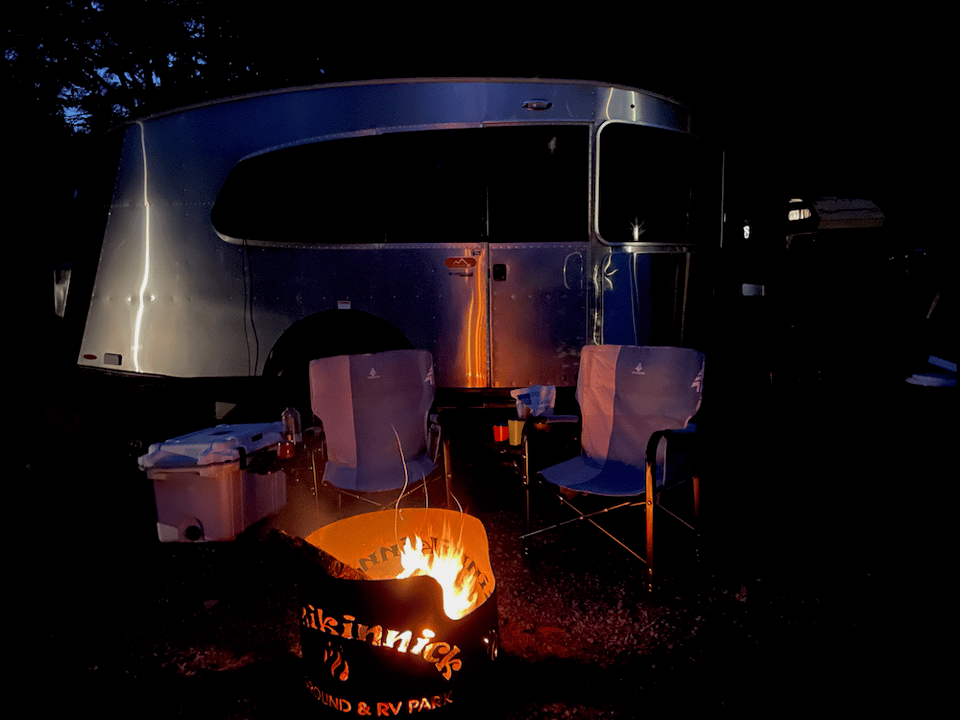
The campground was filled with fisherman. Some of them would rent the small cabins that were scattered throughout the campground, which allowed them to arrive with their trucks pulling their fishing boats. They would head out for the day to catch a variety of fish (including different types of salmon and halibut to name a few). The butcher shop downtown offered a fish processing service, so they would butcher and vacuum seal the fish in packages that the fisherman would store in the small freezers that were in all the cabins, or in one of the two large chest freezers in the laundry/washroom building.
Speaking of the washrooms, we had a lovely chat with Debbie the woman that runs the campground, and heard her story of how she ended up owning the campground. We learned that the campground was fairly derelict when they took it over seven years ago, but have completely transformed it since then. They had to install a new septic and rebuilt the washroom and laundry building. She went four times over budget on the washrooms, but I told her that the heated floors in the shower are amazing and it was the nicest washroom I have ever seen in a campground.
Like many places we have visited on our travels, downtown Prince Rupert has seen better days. There is one area near the port for the cruise ships that has been "beautified" but the rest of the downtown area has many closed storefronts. You can see some of the former glory of the downtown core in buildings like the City Hall.
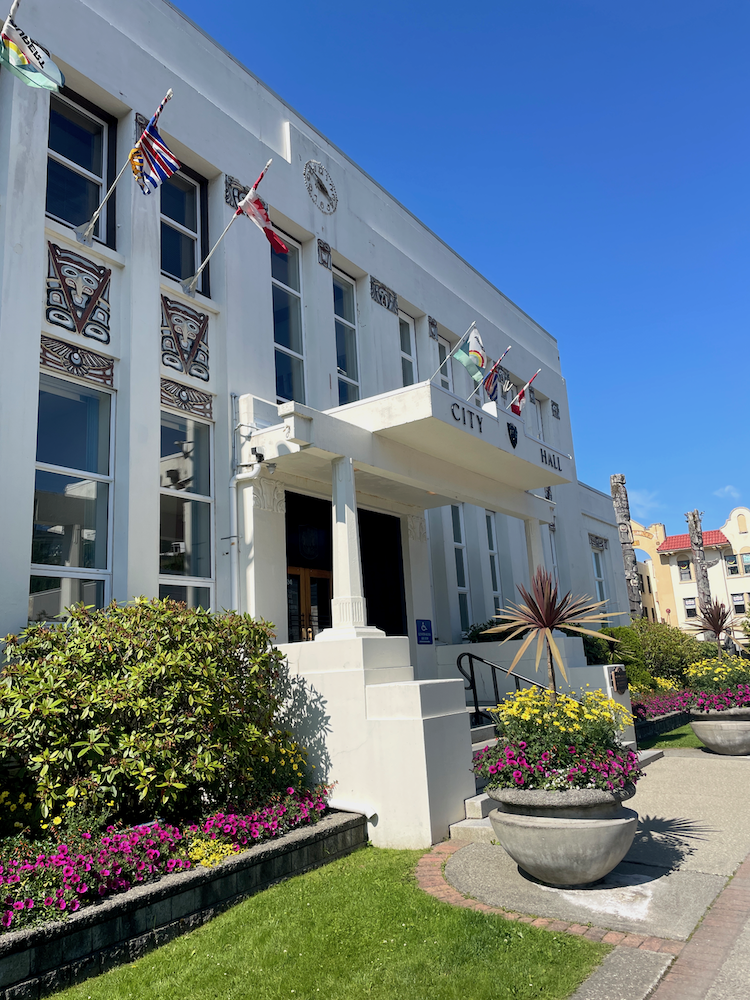
It's a lovely Art Deco/Moderne style building that was opened in 1939. It was built to house a post office and other branches of the Canadian Government. It was designed by Architect Max Downing with North West Coast motifs by Tsimshian Artist William Jeffery.
We went to the Museum of Northern British Columbia. It is a lovely, spacious museum, with a beautiful view out onto the strait and across to Rigby Island.

They had a beautiful collection of woven baskets, the detail on which were amazing.
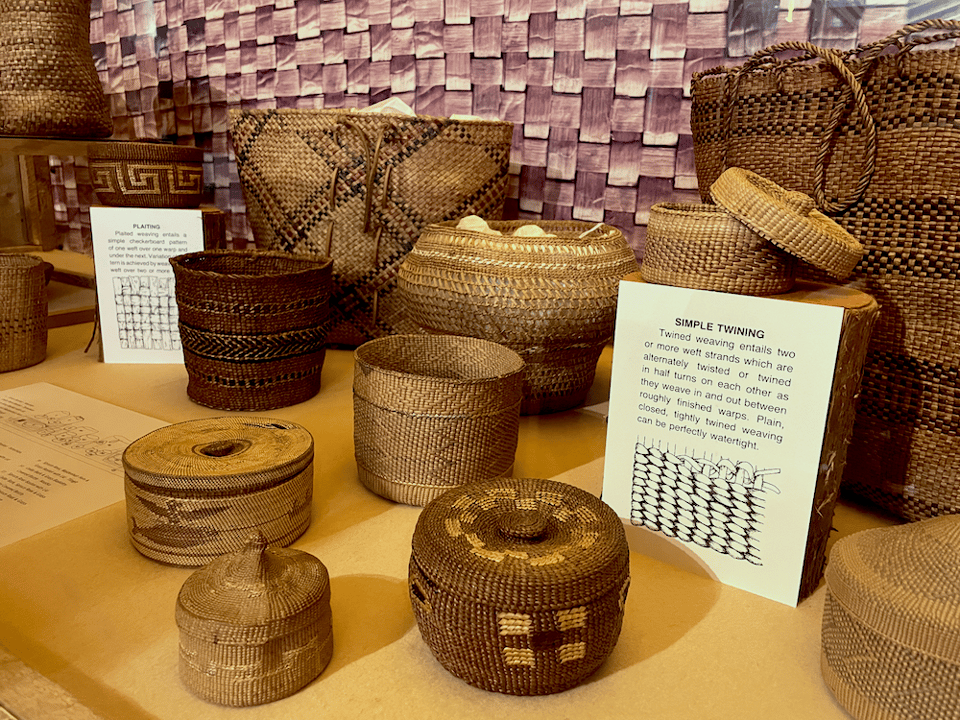
As we were leaving the museum, I saw a poster in their vestibule for the Kwinitsa Railway Museum, so we headed there next! There was a very helpful and knowledgeable person working there, and she quickly explained to us the provenance of the building. In 1906, the Grand Trunk Pacific Railway (GTP) began surveying inland along the Skeena River from its western terminus in Prince Rupert. Along the rail line, stations were built every five to ten miles.
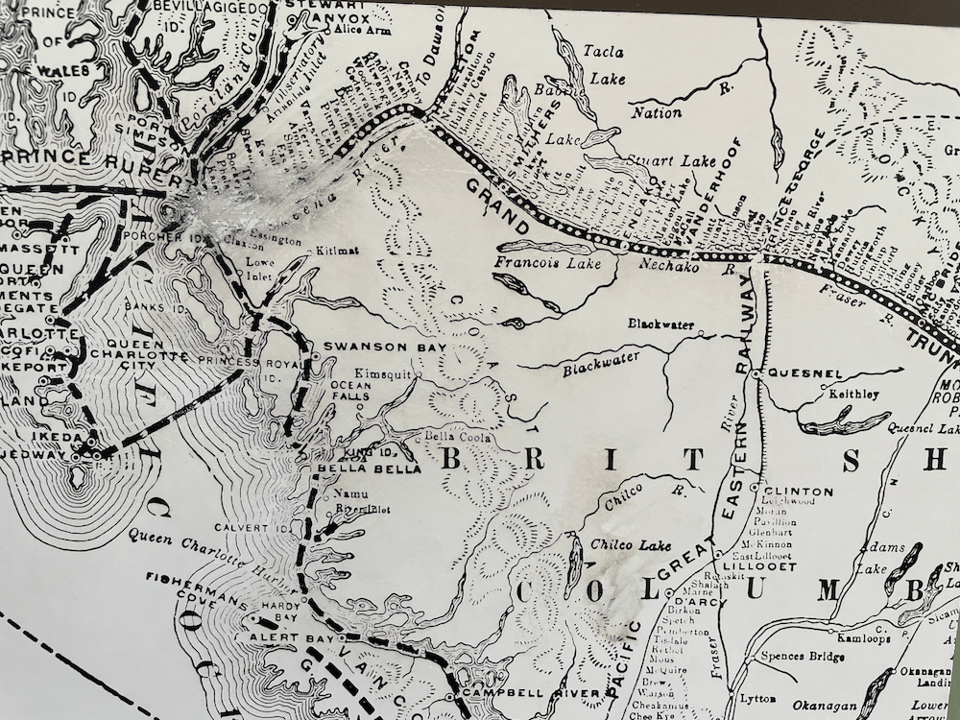
The museum was in the station that had originally been in Kwinitsa, 46 miles from Prince Rupert. Towards the end of World War I, GTP went bankrupt and sold out to the Canadian National Railway (CNR). Kwinitsa became a CNR station until new technology rendered it obsolete in 1985. That same year it was purchased by the museum and was floated down the river to its current location on the waterfront. Apparently there were 6 basic styles of the stations, “Type A” through to “Type F” and the station the museum was in was the most common "Type E".

It as a great little museum with lots of historical photos and a fine collection of Railway Velocipedes.
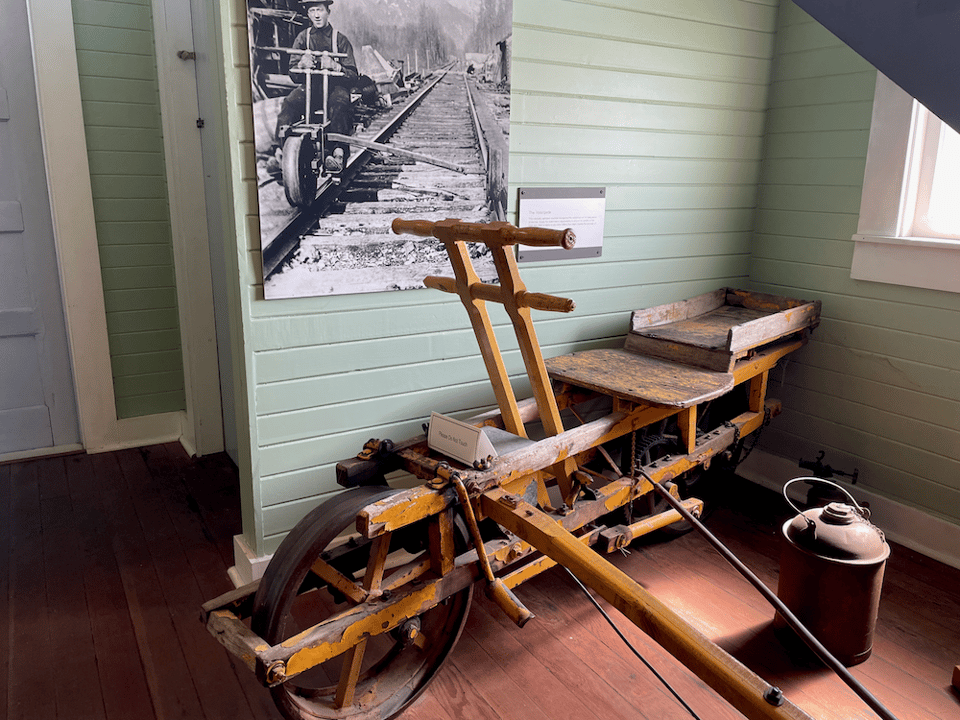
On one of our walks in Prince Rupert we were curious about this small fishing boat stored in its finely detailed enclosure in the Mariners Memorial Park. There were two plaques that explained its presence. On September 25th, 1985, Kabuki Sakamoto left Owase, Japan for a day of fishing on this boat, the Kazu Maru, but he never returned. A year and a half later, the boat was found floating off the Queen Charlotte Islands. It was brought to Prince Rupert to be identified, and it was discovered that the boat was from the sister city of Prince Rupert, Owase, Japan. With permission from the family, the boat was restored and placed in the park as a shrine to all those who have lost their lives on the Pacific Ocean.
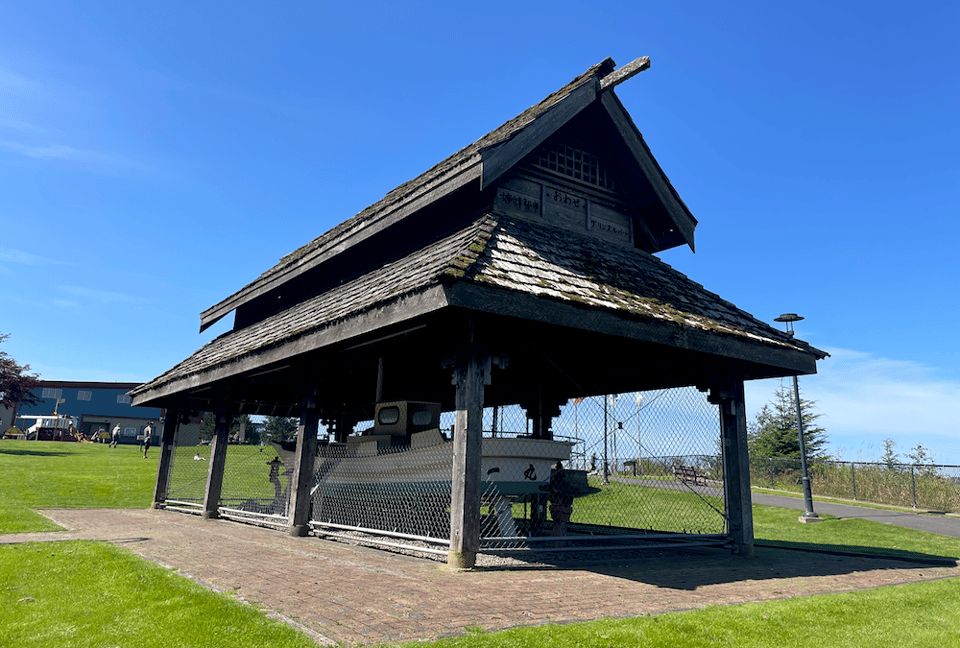
We did two hikes in the Prince Rupert/Port Edward area: the Tall Trees Trail and the Butze Rapids Trail. The Tall Trees Trail was a 4.5km trail that, by the time we had finished had given us the equivalent of climbing 100 flights of stairs. We were rewarded by a beautiful view at the top.
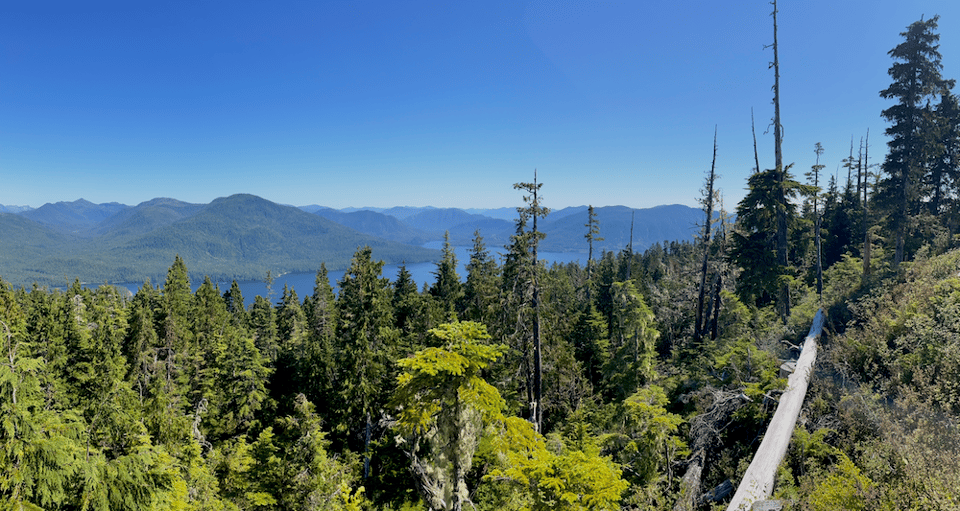
The Butze Rapids Trail was a shorter and flatter trail, but more diverse in terms of the vegetation.

Along the trail, we found a lovely inlet for us to go swimming in what is actually the Pacific Ocean. This means that the rapids go in different directions depending on whether the tide is going in or out!

As I mentioned, we were actually staying in outside of Port Edward which is a very busy fishing port. East of the town is the North Pacific Cannery National Historic Site.

I could do a full post just on it. In 1889, the trustees for the North Pacific Canning Company received a crown grant for 183 acres of land at a cost of $32 and the plant was constructed. It had almost 90 years continuous salmon production and fish processing until ending in the late 1970s. It continued to operate as a reduction facility for the fishing fleet in Prince Rupert until 1981. In 1985 a group of local historians came together to save it from demolition and began the work to turn it into the museum that it is today. It's a fascinating place and you can follow the production line through the building from where the fish were loaded off the boats to the other end where the labeled cans were packed into wooden boxes for distribution.

It was interesting to read about all the people that worked in the facility, including people from China, Japan, as well as many indigenous people. While there are only a few of the houses remaining, at the height of production there were hundreds of such houses stretching out along the shore.
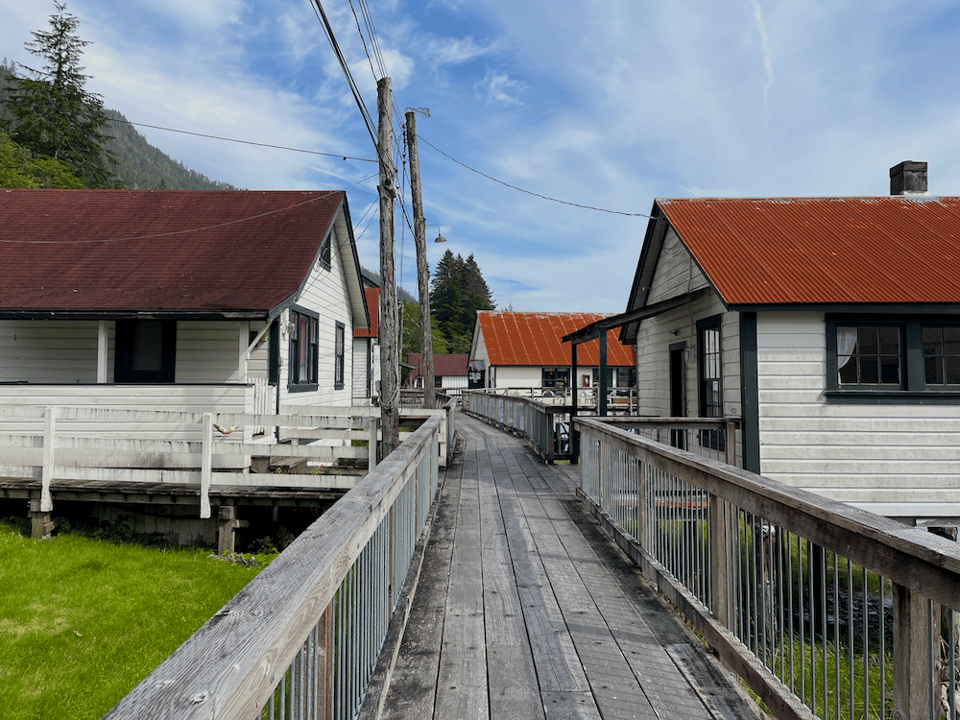
Before we left we went for a drive back towards the Skeena River, so we could find a place to swim to add it to our list of "places we have swam".
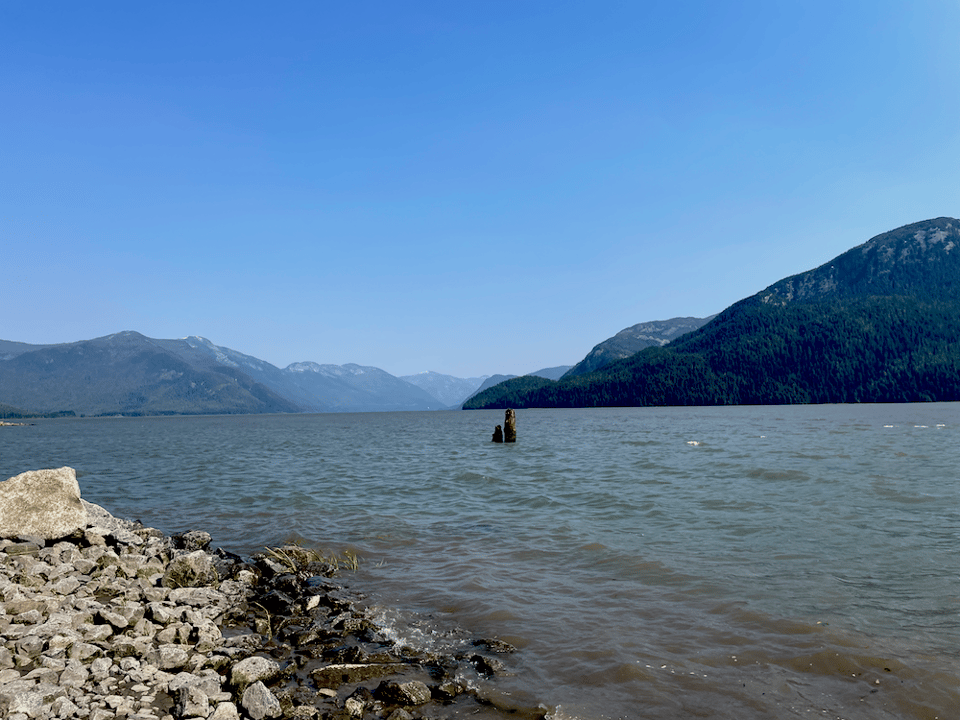
It was really stunningly beautiful in the area around Port Edward and Prince Rupert.
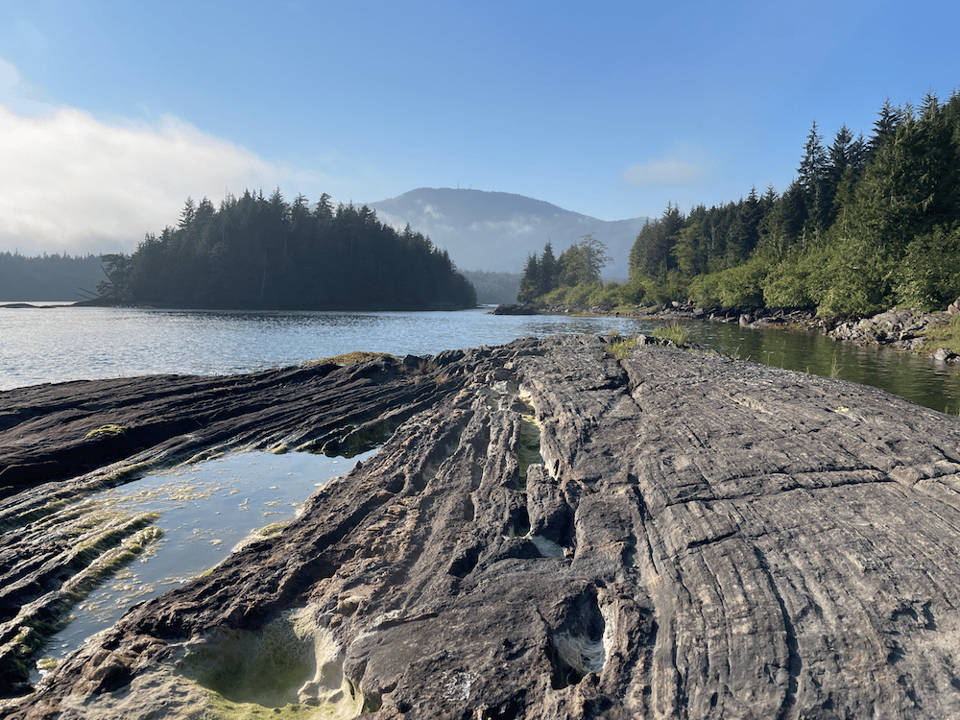
I will close with one of my favourite photos of the fishing boats in one of the harbours in Port Edward, taken in the evening as the fog was rolling in and the nets had been hung out on the pier for the night.
